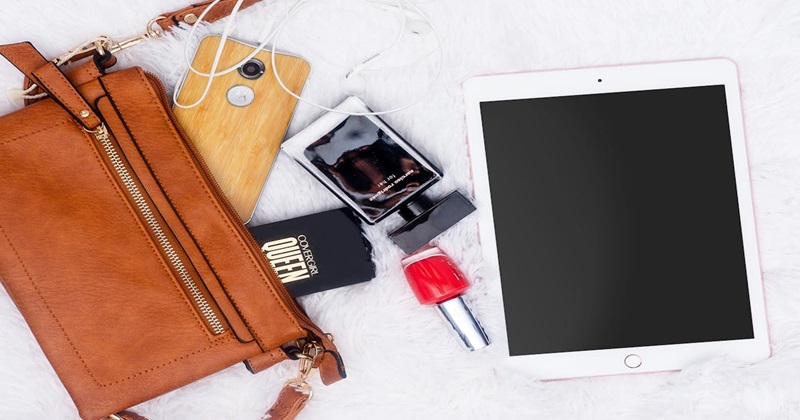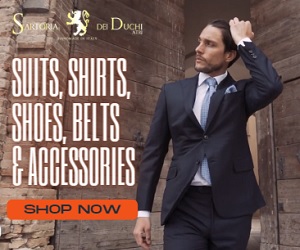Silver jewelry can be valuable to your collection, but only if it is authentic. Understanding how to tell real silver apart from counterfeit is essential for safeguarding your investment and guaranteeing you receive the expected quality. With counterfeit pieces flooding the market, it’s easy to be deceived by a shiny, cheap replica. Unfortunately, wearing fake silver can lead to skin irritation, discoloration, and tarnishing. To help you avoid these pitfalls, we’ll explore reliable methods to check if your silver jewelry is genuine. By the end of this guide, you’ll have the confidence to assess your silver pieces and make informed purchasing decisions.
Understanding Silver and Its Variations
Not all silver jewelry is created equal. There are critical differences between types of silver, which can impact the price, durability, and overall value of your jewelry. Understanding these variations is essential for knowing what you’re paying for.
Sterling Silver, Fine Silver, and Silver-Plated Jewelry
- Sterling Silver (925 Silver): The most commonly used type of silver for jewelry, sterling silver consists of 92.5% silver, with the remaining 7.5% typically made up of copper or other metals. This balance between purity and durability makes sterling silver ideal for everyday wear. It retains a shiny, polished appearance while strong enough to withstand regular use. You’ll often see jewelry marked with a “925” hallmark, confirming that it meets the sterling silver standard.
- Fine Silver (999 Silver): Fine silver is much purer, containing 99.9% silver. Nevertheless, this higher purity has a downside—fine silver is softer and more susceptible to scratches and bends than sterling silver. It could be better for high-wear pieces like rings or bracelets, but it’s an excellent option for intricate, delicate designs or collector’s items. Jewelry makers often stamp pieces made of fine silver with a “999” hallmark.
- Silver-Plated Jewelry: Silver-plated jewelry offers a more budget-friendly choice but lacks durability. It features a thin layer of silver applied over a base metal, such as copper or brass, to create the look of silver. However, this thin layer can wear off, revealing the duller, less attractive metal beneath. Silver-plated items typically don’t have a hallmark, and while they may initially look like sterling silver, they offer different longevity and value.
Differences in Purity and Composition
The silver content in a piece of jewelry directly influences its quality, appearance, and durability. Sterling silver’s blend of metals gives it a robust structure that holds up to daily wear, while fine silver is more delicate due to its higher purity. Meanwhile, silver-plated items are mainly valuable for their aesthetic but have little intrinsic worth since the silver content is minimal. Knowing these differences can save you from overpaying for a piece that may not hold up over time.
Appearance and Characteristics
When it comes to appearance, sterling silver tends to be brighter and more reflective than fine silver due to the presence of copper, which enhances its shine. Fine silver has a slightly duller, more muted luster but retains a smooth, elegant finish. In contrast, silver-plated items may mimic the look of sterling silver at first glance but will tarnish and show signs of wear much faster. Over time, silver-plated jewelry may lose its shine, especially around areas that experience frequent contact with skin or water, revealing the base metal beneath.
Visual Inspection and Hallmarks
One of the most straightforward methods to check the authenticity of silver jewelry is by performing a visual inspection, mainly looking for telltale signs like hallmarks.
Hallmarks like “925” or “999”
Hallmarks are official stamps or engravings on jewelry that quickly indicate the silver’s authenticity and purity. Most genuine silver jewelry will bear one of these hallmarks:
- The “925” hallmark tells you that the jewelry contains sterling silver, made up of 92.5% pure silver and 7.5% other metals, typically copper, which enhances its durability. This blend strengthens the piece and helps maintain its beautiful shine over time.
- The “999” hallmark confirms that the piece is fine silver, consisting of 99.9% pure silver with no other metals mixed in. This high purity level gives fine silver its distinctive luster, making it an excellent choice for those seeking a luxurious look in their jewelry.
You’ll typically find these stamps in less visible jewelry areas, like the inside of a ring band or the back of a pendant. If you can’t spot a hallmark, it might indicate that the item isn’t real silver or that the manufacturer made it poorly.
Importance of Checking for Hallmarks
Hallmarks are one of the most reliable ways to verify silver’s authenticity. A hallmark signifies that the piece meets specific purity standards. However, the absence of a hallmark doesn’t automatically mean the piece is fake—it could simply be older or handcrafted. Still, it’s worth investigating further, as mass-produced fake items often skip hallmarking to cut costs. The hallmark will always be present if you buy from a reputable seller.
Visual Differences Between Sterling Silver and Other Materials
A careful inspection can reveal differences between authentic sterling silver and fake or plated alternatives. Genuine sterling silver has a relaxed, slightly heavy feel and a lustrous shine that dims somewhat over time. Tarnish naturally occurs with silver but can easily be polished away. By contrast, fake silver may have an unnaturally bright or yellowish tint. It may also feel lighter than genuine silver due to the lower base metal density. Over time, silver-plated items may begin to chip, flake, or reveal a different color underneath, such as brass or copper.

At-Home Tests to Spot the Authenticity of Your Silver Jewelry
If more than visual inspection and hallmarks are needed to confirm your jewelry’s authenticity, you can perform several at-home tests to get more clarity.
The Magnet Test
Silver is a non-magnetic metal, so the magnet test is one of the simplest tests to check for authenticity. Take a small, strong magnet and hold it near your piece of jewelry. If the jewelry is drawn to the magnet, it isn’t made of pure silver. However, some counterfeit silver items are made from non-magnetic metals like stainless steel, so while the magnet test can be helpful, it can sometimes be more conclusive.
The Ice Cube Test
Silver is a highly effective conductor of heat, and the ice cube test takes advantage of this characteristic. To carry out this test, set an ice cube directly on the surface of the silver jewelry. Real silver will conduct heat rapidly, causing the ice cube to melt much faster than on other surfaces. If the ice melts quickly, it shows that the item comes from genuine silver. If it melts slowly, the piece is likely fake.
The Lighter Test
The lighter test uses heat to help verify the authenticity of silver. Hold the jewelry with tweezers and apply the flame from a lighter for a few seconds. Real silver will darken slightly but won’t melt or burn. On the other hand, fake silver may get damaged, warp, or even emit an unusual odor if it contains different metals or plastic coatings. While this test is practical, handling the jewelry is important to avoid burns or accidents.
The Bleach Test
Another at-home method is the bleach test. Silver reacts to oxidizing solid agents like bleach by tarnishing. A cotton swab applies a small amount of bleach to an inconspicuous area of the jewelry to conduct this test. If the silver tarnishes, it’s likely authentic. However, this test can damage the jewelry if done excessively, so use it sparingly and with caution. Always rinse the item thoroughly after the test to prevent long-term damage.
Professional Testing Methods
Professional testing methods provide more conclusive results if you still need to figure out the authenticity of your silver jewelry after trying at-home tests.
The Silver Acid Test
Professional jewelers often use an acid test to determine the authenticity of silver. This method applies a drop of testing acid to a slight scratch on the jewelry. The reaction will indicate whether the item is genuine silver or an alloy. Real silver will react with milky white, while other metals may turn green, blue, or red. Since the acid test can leave a small mark, it’s best to leave this to professionals who can minimize damage to the piece.
Professional Appraisal
A professional appraisal is the safest way to confirm the authenticity and value of valuable silver items. A certified appraiser will use various tools and methods to assess your jewelry’s silver content, condition, and worth. They can also provide official documentation of the item’s authenticity, handy if you plan to sell or insure the piece. Though this service comes with a cost, it’s worth considering for high-value items or family heirlooms.
Common Myths and Misconceptions
Silver jewelry has long been subject to myths and misconceptions, many of which can mislead buyers into making the wrong choices.
Misconception: Tarnishing Means the Jewelry is Fake
One of the most common myths is that if silver tarnishes, it must be fake. Tarnishing is a natural process for all genuine silver over time. The tarnish forms when silver reacts with sulfur compounds in the air, leaving a dark patina. While tarnishing is natural, it can be easily polished away, restoring the silver’s original shine. By contrast, fake silver may discolor but often reveals the base metal beneath rather than producing a tarnished surface.
Misconception: All Silver Jewelry is High-Value
Another misconception is that all silver jewelry carries the same value. While silver is a precious metal, not all silver jewelry is created equal. Sterling silver, for instance, has intrinsic value and durability, while silver-plated jewelry lacks significant worth because of its thin layer of silver. Silver-plated items are more affordable but wear down quickly, losing their silver coating. Knowing the difference between sterling silver and silver-plated jewelry can help you determine the actual value of your pieces.
Conclusion
Determining whether your silver jewelry is genuine is essential for making informed purchase decisions and preserving your investment. By understanding the differences between types of silver, performing visual inspections, conducting at-home tests, and consulting professionals when necessary, you can confidently assess the authenticity of your jewelry.
Remember, knowledge is power—equipping yourself with the tools to identify genuine silver will protect your wallet and ensure you enjoy beautiful, lasting pieces in your collection. With these tips, you’ll never have to second-guess your silver jewelry again!








